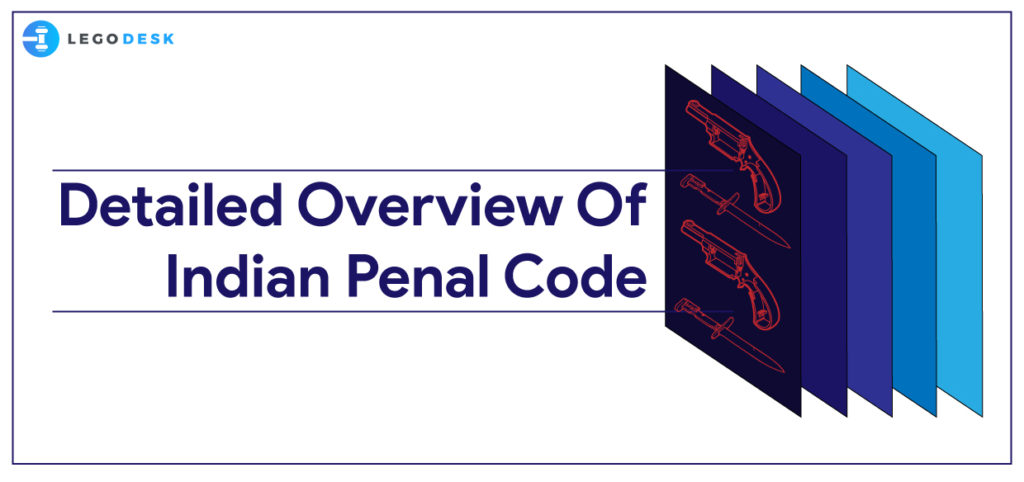Here is the Detailed Overview Of Indian Penal Code

What is the Indian Penal Code?
The Indian Penal Code is the official criminal code of India, which was drafted way back in 1860. It’s objective is to provide a general penal code for the country. It has 511 sections across 23 chapters, providing the list of crimes along with their definitions and punishments. The IPC has been amended several times and is now supplemented by other Acts. Its jurisdiction extends to the whole of India except the State of Jammu and Kashmir.
History of Indian Penal Code
The First Law Commission prepared the draft of the Indian Penal Code which was chaired by Thomas Babington Macaulay in the year 1834. Elements were also derived from the Napoleonic Code and the Louisiana Civil Code of 1825. The first final draft of the IPC was submitted before then the Governor-General of India in Council in 1837, but the draft was revised subsequently. The drafting was completed in the year 1850 and was presented to the Legislative Council in the year 1856. It was only in 1860 when the draft became law and came into operation on January 1, 1862.[1]
Overview
The objective of the Indian Penal Code is to lay what is right and what is wrong and to lay down the punishment for committing such wrong. In criminal law, the “intention” of committing the crime plays a huge role in deciding the liability of the offense.
There are usually five stages of committing the crime[2] –
- Motive
- Intention
- Preparation
- Attempt
- Commission
Liability in crime arises when one goes beyond the stage of preparation and attempts to do the illegal act.
The Indian Penal Code starts with an introduction and provides explanations and exceptions used in it, and then lays down a wide range of offenses.
Broad classification of crimes under the Indian Penal Code (IPC) –
- Crime against the body – Murder, Culpable homicide not amounting to murder, kidnapping, etc.
- Crimes against property – Theft, dacoity, burglary, etc.
- Crimes against public order – Riots and Arson
- Economic crimes – Cheating and Counterfeiting
- Crimes against women – Rape, dowry death, cruelty by husband and relatives, molestation, sexual harassment and importation of girls
- Crimes against children – Child rape, kidnapping, and abduction of children, selling and buying of girls for prostitution, abetment to suicide, infanticide, foeticide.
- And other crimes.
As pointed out, the Indian Penal Code (IPC) covers the substantial part of criminal law in India. It defines various common criminal offenses. For example, it lays down the definition of murder, theft, assault and several other offenses and also stipulates appropriate punishments for each one of them. For example, the offense of “theft” is defined under Section 378 of the Indian Penal Code. It says that if any person dishonestly intends to take away any movable property out of the possession of any person without his/her consent, and moves that property, then he/she is said to commit the offense of theft. Mere intention to take somebody’s property without actually going ahead with the later process does not constitute theft.
The Act further provides for an explanation of various sections. These explanations further elaborate on the sections. For example, Section 378 provides five explanations to the definition of theft –
- Explanation 1.—A thing so long as it is attached to the earth, not being movable property, is not the subject of theft; but it becomes capable of being the subject of theft as soon as it is severed from the earth.
- Explanation 2.—A moving effected by the same act which affects the severance may be a theft.
- Explanation 3.—A person is said to cause a thing to move by removing an obstacle which prevented it from moving or by separating it from any other thing, as well as by actually moving it.
- Explanation 4.—A person, who by any means causes an animal to move, is said to move that animal, and to move everything which, in consequence of the motion so caused, is moved by that animal.
- Explanation 5.—The consent mentioned in the definition may be express or implied, and may be given either by the person in possession or by any person having for that purpose authority either express or implied.
The Punishment for theft is stipulated in Section 379 which prescribes punishment for imprisonment extendable up to three years, or with fine, or both.
Different crimes carry different punishments according to the severity of the offense committed. For example, the punishment for murder is either death or life imprisonment.
CONCLUSION
This is how the Indian Penal Code is structured. First, the definition of the offense is laid down, and then the punishment for the offense is provided. In addition to the Indian Penal Code, there is other special legislation such as the Information Technology Act, the Prevention of Corruption Act, Indecent Representation of Women Act, the Narcotics and Psychotropic Substances Act, etc. which also enable classification and punishment of criminal acts.
The definition only gives an idea of what the offense is. It does not tell us what we should do if someone has stolen our property, or whom should we seek justice from? Or, what can the police do in this regard? In other words, the Indian Penal Code is only concerned with substantive criminal law and not with procedural criminal law. Procedural Law is spelled out in the Criminal Procedure Code, 1973.
[1] HISTORICAL INTRODUCTION TO THE INDIAN PENAL CODE, ESSAYS OF INDIAN PENAL CODE 33–43, PDF.
[2] Rohit Dangare & Rohit Dangare, In Nutshell the aspects of Indian Penal Code, Criminal Procedure Code, and Indian Evidence Act: Part I Academia.edu, PDF (last visited May 11, 2019).
Try our Debt Resolution solutions today Request a Demo
Criminal